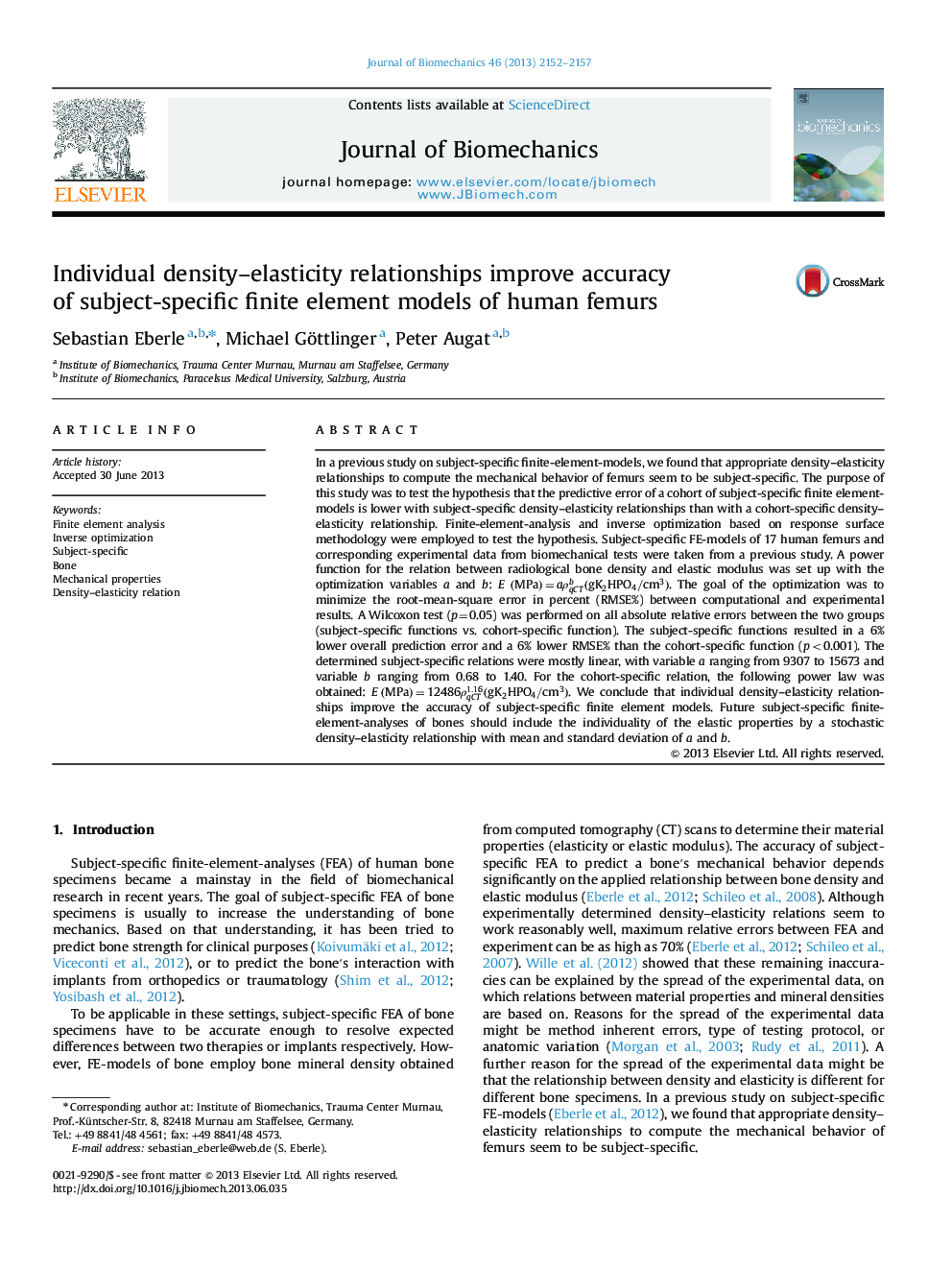| Article ID | Journal | Published Year | Pages | File Type |
|---|---|---|---|---|
| 872203 | Journal of Biomechanics | 2013 | 6 Pages |
In a previous study on subject-specific finite-element-models, we found that appropriate density–elasticity relationships to compute the mechanical behavior of femurs seem to be subject-specific. The purpose of this study was to test the hypothesis that the predictive error of a cohort of subject-specific finite element-models is lower with subject-specific density–elasticity relationships than with a cohort-specific density–elasticity relationship. Finite-element-analysis and inverse optimization based on response surface methodology were employed to test the hypothesis. Subject-specific FE-models of 17 human femurs and corresponding experimental data from biomechanical tests were taken from a previous study. A power function for the relation between radiological bone density and elastic modulus was set up with the optimization variables a and b : E(MPa)=aρqCTb(gK2HPO4/cm3). The goal of the optimization was to minimize the root-mean-square error in percent (RMSE%) between computational and experimental results. A Wilcoxon test (p=0.05) was performed on all absolute relative errors between the two groups (subject-specific functions vs. cohort-specific function). The subject-specific functions resulted in a 6% lower overall prediction error and a 6% lower RMSE% than the cohort-specific function (p<0.001). The determined subject-specific relations were mostly linear, with variable a ranging from 9307 to 15673 and variable b ranging from 0.68 to 1.40. For the cohort-specific relation, the following power law was obtained: E(MPa)=12486ρqCT1.16(gK2HPO4/cm3). We conclude that individual density–elasticity relationships improve the accuracy of subject-specific finite element models. Future subject-specific finite-element-analyses of bones should include the individuality of the elastic properties by a stochastic density–elasticity relationship with mean and standard deviation of a and b.
